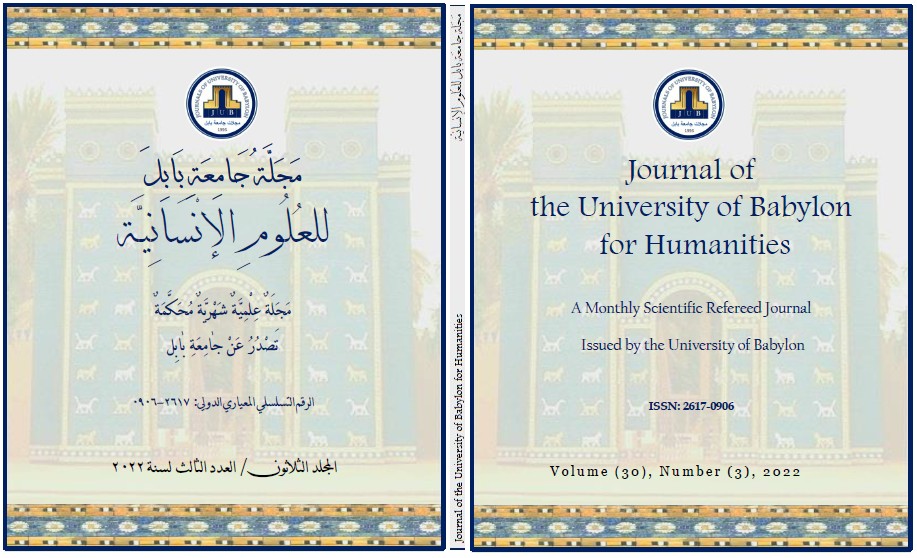The Connotations of Non-linguistic Sounds in the Theatrical Actors’ Performance: The Play Rayihat Harb as a Model
Main Article Content
Abstract
Often the meaning arrives in brief phrases and allusions to have a more effective action than long narrative speech. Whenever the word is reduced، it is crossed in a deeper way to turn it into a sound syllable that is indicative of that same word or phrase and situation. For this reason، the researcher divided his research into four chapters، which are the first chapter: The methodological framework of the research and it includes: the research problem that centered on the following question (What are the indications issued by the voice of the actor (grunts، groans، screams، giggles) that carry a meaningful suggestion in the speech of the theatrical performance?). Then the importance of the research and the need for it، then the goal of the research، then the limits of the research: temporal (2013-2017) spatial (Baghdad National Theatre) and objectivity، which is to stand on the study of the meaning of sounds (groans، sighs، murmurs) as words that are in harmony and in harmony with the dimensions of personality and realism of actions and reactions Finally، defining the terminology and procedural definition. As for the second chapter (the theoretical framework)، it included two chapters. The first included the non-linguistic voice. The second topic was concerned with studying the sound from the directors' point of view، and the chapter concluded with the indicators that resulted from the theoretical framework. As for the third chapter، it included the research procedures، samples، tool and research method. The play (The Smell of War) was chosen as a model، and the results were:
1.The actor's performance has acquired an abstract character away from his traditional image by deconstructing words and borrowing sounds indicating words.
- The non-linguistic sounds gave different hidden meanings that indicated a single suggestion understood from the context.
- The non-linguistic sounds that the actor makes bring the state of integration between the actor and the character he plays and create a state of interaction between himself and the role.
- Non-verbal sounds were used as a state of grumbling and protest، and at the same time، a state of readiness، continuity، and confrontation with the other.
- The audio clips indicated a state of ridicule using well-known and locally circulated sounds، which are voices that indicate mockery and ridicule، with each inaccurate phrase to be an indication expressing the idea to be communicated by the author and director
The most important conclusions were:
1.The hum at the actor expressed mental states that earned them an expressive value and an aesthetic dimension in the performance
2، The act of hums and groans is actually more impressive and surprising than watching.
3.Using the hum sound as a tool to link between one situation and another in the performance، thus achieving a graceful، flowing transition between scenes.
The chapter also contains proven sources

